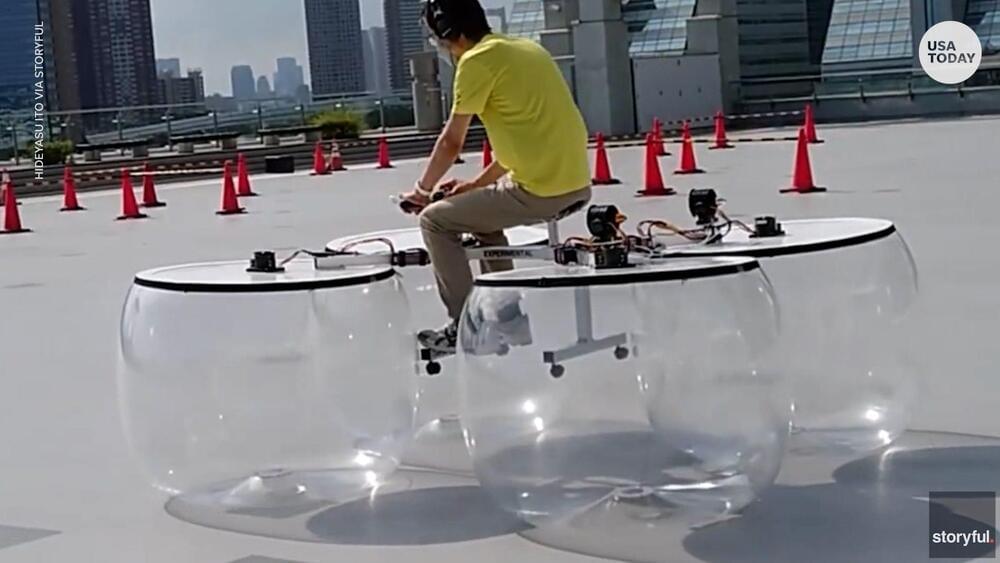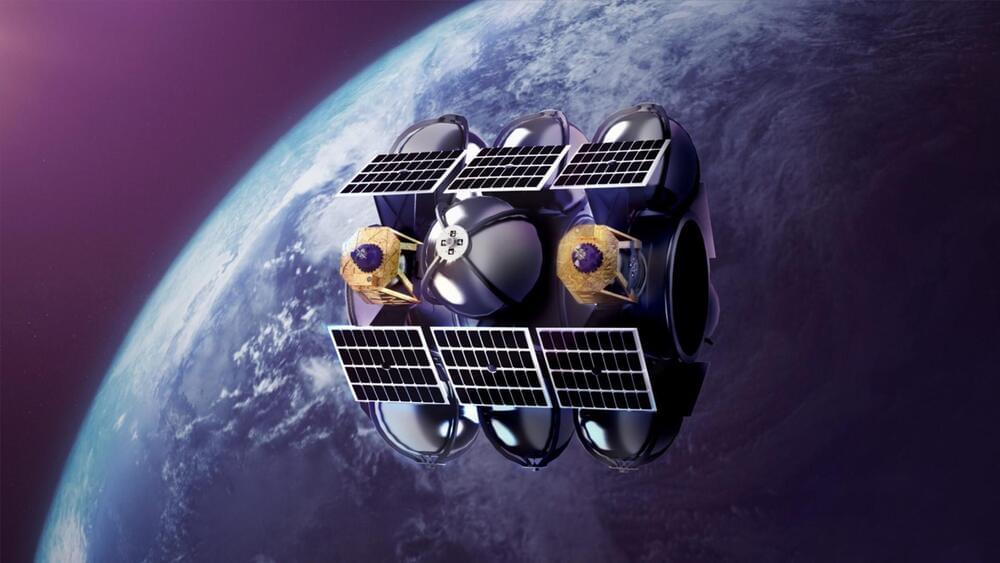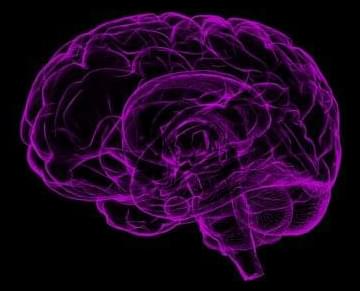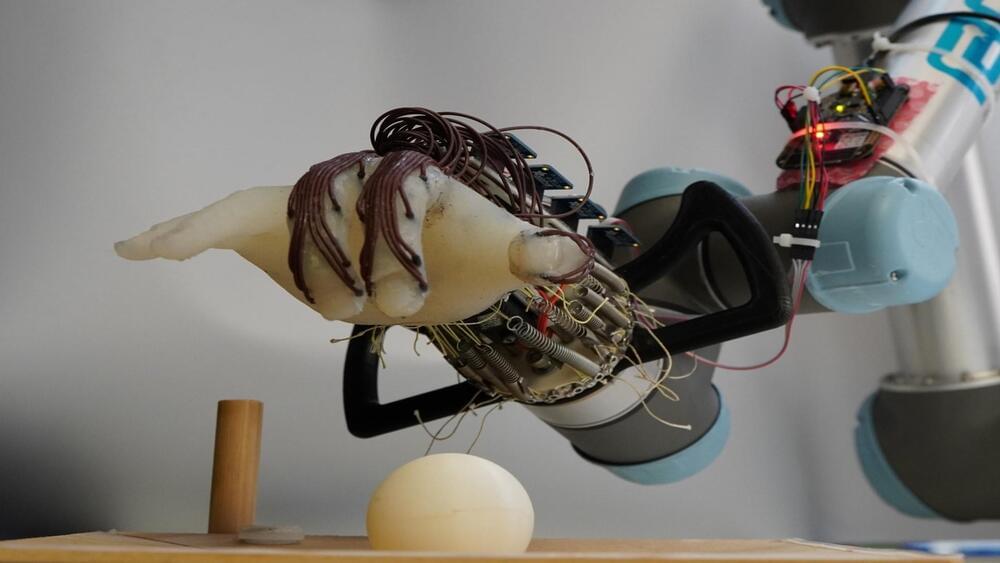Japanese inventor Hideyasu Ito’s hovercraft invention went viral after British YouTube creator Tom Scott featured it in a video in early April.



One of the most difficult issues in space exploration is extending the lifespan of satellites. Even if the satellite’s system is operational, it can run out of fuel and become defunct.
Enter Orbit Fab. This startup is working on an innovative solution to make satellites reusable by developing gas stations in space to refuel them. We had written about them in 2021.

Google CEO Sundar Pichai believes artificial intelligence is the most profound technology in the history of human civilization—potentially more important than the discovery of fire and electricity—and yet even he doesn’t fully understand how it works, Pichai said in an interview with CBS’s 60 Minutes that aired yesterday (April 16).
“We need to adapt as a society for it…This is going to impact every product across every company,” Pichai said of recent breakthroughs in A.I. in a conversation with CBS journalist Scott Pelley. It’s the Google CEO’s second long-form interview in a two weeks as he apparently embarks on a charm offensive with the press to establish himself and Google as a thought leader in A.I. after the company’s latest A.I. product received mixed reviews.
Google in February introduced Bard, an A.I. chatbot to compete with OpenAI’s ChatGPT and Microsoft’s new Bing, and recently made it available to the public. In an internal letter to Google employees in March, Pichai said the success of Bard will depend on public testing and cautioned things could go wrong as the chatbot improves itself through interacting with users. He told Pelley Google intends to deploy A.I. in a beneficial way, but suggested how A.I. develops might be beyond its creator’s control.

The James Webb Space Telescope keeps finding galaxies that shouldn’t exist, a scientist has warned.
Six of the earliest and most massive galaxies that NASA’s breakthrough telescope has seen so far appear to be bigger and more mature than they should be given where they are in the universe, researchers have warned.
The new findings build on previous research where scientists reported that despite coming from the very beginnings of the universe, the galaxies were as mature as our own Milky Way.
OpenAI’s breakthrough consistency model will lead into image understanding to make GPT4 multimodal, providing next generation improvements with human-computer interaction, human-robot interaction, and even helping the disabled. Microsoft has already released a predecessor to GPT4 image understanding by with Visual ChatGPT, which is much more limited in its abilities.
Deep Learning AI Specialization: https://imp.i384100.net/GET-STARTED
AI Marketplace: https://taimine.com/
AI news timestamps:
0:00 Multimodal artificial intelligence.
0:35 OpenAI consistency models.
1:35 GPT4 and computers.
3:04 GPT4 and robotics.
4:28 GPT4 and the disabled.
5:36 Microsoft Visual ChatGPT
#ai #future #tech
Researchers at Texas A&M University have discovered a novel circuit element referred to as a meminductor that led to a significant breakthrough in circuit elements.
In an electrical circuit, circuit elements play a crucial role in managing the flow of electricity. The resistor, capacitor, and inductor are the traditional circuit elements, while the memristor and memcapacitor are the more recent additions discovered in the past 15 years. These newer components, known as “mem-” versions of the classical elements, have different voltage and current characteristics that are influenced by previous voltage or current values over time, giving them memory-like properties.
Dr. H. Rusty Harris, an Associate Professor at the Department of Electrical and Computer Engineering at Texas A&M University, has made a significant breakthrough in circuit elements with the discovery of a new component called the meminductor.

West Australian researchers have developed a breakthrough method to measure the brain fluid pressure in humans, which may reduce vision damage experienced by astronauts on long-haul space flights.
A cross-disciplinary team from the Lions Eye Institute and the International Space Centre at The University of Western Australia has developed a clever technique to measure the pressure in the brain fluid, the study was published in Nature in npj Microgravity.

Cambridge University researchers developed a novel robotic hand that works with minimal finger actuation.
In a significant breakthrough, researchers at the University of Cambridge have designed an energy-efficient robotic hand that can grasp a variety of objects with minimal finger actuation, according to a study published on April 11 in Advanced Intelligent Systems.
By relying on passive wrist movement and tactile sensors embedded in its ‘skin,’ the 3D-printed hand can carry out complex movements, paving the way for low-cost, energy-efficient robotics with more natural and adaptable activities.

In recent years, cancer therapies have often fallen short of expectations, with tumors developing resistance to medication. One such example is alpelisib, a drug approved for use in Switzerland as a treatment for advanced breast cancer.
However, a research group at the Department of Biomedicine of the University of Basel has made a breakthrough in understanding the reasons behind this resistance, publishing their findings in the journal Cell Reports Medicine.
For patients suffering from advanced and metastatic breast cancer, effective treatment options are limited. The PI3K signaling pathway is frequently overactive in breast cancer due to mutations that encourage tumor growth.

The GPT phenomenon and the future of humanity in the face of advances in Artificial Intelligence.
The Age of Artificial Intelligence is an increasingly present reality in our daily lives. With the rise of technologies such as Natural Language Processing (NLP) and Artificial Neural Networks (ANN), the possibility of creating machines capable of performing tasks that were previously exclusive to humans has emerged.
One of these technologies is the Generative Pre-trained Transformer, better known as GPT. It’s the Large Language Model (LLM) developed by OpenAI.
OpenAI was founded in San Francisco, California in 2015 by Sam Altman, Reid Hoffman, Jessica Livingston, Elon Musk, Ilya Sutskever, Peter Thiel, among others, who collectively pledged $1 billion. Musk resigned from the board in 2018, but continued to be a donor to the project.